- Home
- Rabindranath Tagore
Selected Short Stories
Selected Short Stories Read online
RABINDRANATH TAGORE: SELECTED SHORT STORIES
RABINDRANATH TAGORE was born in 1861, into one of the foremost families of Bengal. He was the fourteenth child of Debendranath Tagore, who headed the Brahmo Samaj (a Hindu reform movement). The family house at Jorasanko in Calcutta was a hive of cultural and intellectual activity. Tagore was educated by private tutors, and first visited Europe in 1878. He started writing at an early age, and his talent was recognized by Bankimchandra Chatterjee, the leading writer of the day. In the 1890s Tagore lived mainly in rural East Bengal, managing family estates. In the early 1900s he was involved in the svadeśī campaign against the British, but withdrew when the movement turned violent. In 1912 he came to England with Gitanjali, an English translation of some of his religious lyrics. It was acclaimed by W. B. Yeats and later published by Macmillan, leading directly to his winning the Nobel Prize for Literature in 1913. In the 1920s and 1930s he made extensive lecture tours of America, Europe and the Far East. Proceeds from these tours, and from his Western publications, went to Visva-Bharati, the school and international university he created at Santiniketan, a hundred miles north-west of Calcutta.
Tagore was a controversial figure at home and abroad: at home because of his ceaseless innovations in poetry, prose, drama and music; abroad because of the stand he took against militarism and nationalism. In 1919 he protested against the Amritsar Massacre by returning the knighthood that the British had given him in 1915. He was close to Mahatma Gandhi, who called him the ‘Great Sentinel’ of modern India; but he generally held himself aloof from politics. His own translations (Collected Poems and Plays of Rabindranath Tagore, 1936) have not proved sufficient to sustain the worldwide reputation he enjoyed in his lifetime; but as a Bengali writer his eminence is unchallenged. His works run to thirty-two large volumes. They contain some sixty collections of verse; novels such as Gora and The Home and the World; experimental plays such as The Post Office and Red Oleanders; and essays on a host of religious, social and literary topics. He also wrote over 2,000 songs, which have become the national music of Bengal, and include the national anthems of both India and Bangladesh. Late in life he took up painting, exhibiting in Moscow, Berlin, Paris, London and New York. He died in 1941.
WILLIAM RADICE was born in 1951 in London. He has pursued a double career as a poet and as a scholar and translator of Bengali, and has written or edited nearly thirty books. In addition to his translations of Tagore for Penguin, his publications include eight books of his own poems, Teach Yourself Bengali (1994), Myths and Legends of India (2001) and A Hundred Letters from England (2003). He has also translated from German (Martin Kämpchen’s The Honey-Seller and Other Stories, 1995, and Sigfrid Gauch’s autobiographical novel Traces of My Father, 2002) and Italian (Puccini’s Turandot for English National Opera). He wrote the libretto for Param Vir’s Tagore-based chamber opera Snatched by the Gods (1992). He has contributed regularly to BBC radio, has lectured widely in South Asia, North America and Europe, and has been given literary prizes in both India and Bangladesh.
William Radice is Senior Lecturer in Bengali at SOAS, University of London, and from 1999 to 2002 was Head of the Departments of South and South East Asia. He lives in London and Northumberland.
RABINDRANATH TAGORE
Selected Short Stories
Translated with an Introduction by
WILLIAM RADICE
PENGUIN BOOKS
Dedicated to the Rivers of Bengal Revised edition dedicated to Arun Deb of Konnagar on the Shore of one of the Rivers of Bengal
PENGUIN BOOKS
Published by the Penguin Group
Penguin Books Ltd, 80 Strand, London WC2R 0RL, England
Penguin Group (USA) Inc., 375 Hudson Street, New York, New York 10014, USA
Penguin Books Australia Ltd, 250 Camberwell Road, Camberwell, Victoria 3124, Australia
Penguin Books Canada Ltd, 10 Alcorn Avenue, Toronto, Ontario, Canada, M4V 3B2
Penguin Books India (P) Ltd, 11 Community Centre, Panchsheel Park, New Delhi – 110 017, India
Penguin Group (NZ), cnr Airborne and Rosedale Roads, Albany, Auckland 1310, New Zealand
Penguin Books (South Africa) (Pty) Ltd, 24 Sturdee Avenue, Rosebank 2196, South Africa
Penguin Books Ltd, Registered Offices: 80 Strand, London WC2R 0RL, England
www.penguin.com
First published in Penguin Books 1991
Revised edition 1994
Copyright © William Radice, 1991, 1994, 2005
All rights reserved
Acknowledgement is given to Visva-Bharati Publishing Department, on behalf of the Rabindranath Tagore estate, and to Macmillan London Ltd for permission to reproduce the following stories: ‘The Living and the Dead’, ‘The Postmaster’, ‘Housewife’, ‘Little Master’s Return’, ‘Skeleton’, ‘A Single Night’, ‘Fool’s Gold’, ‘Punishment’, ‘A Problem Solved’, ‘Exercise-book’, ‘In the Middle of the Night’, ‘Elder Sister’ and ‘The Hungry Stones’
The moral right of the translator has been asserted
Except in the United States of America, this book is sold subject to the condition that it shall not, by way of trade or otherwise, be lent, re-sold, hired out, or otherwise circulated without the publisher’s prior consent in any form of binding or cover other than that in which it is published and without a similar condition including this condition being imposed on the subsequent purchaser
ISBN: 9781101491454
Contents
Preface to the 1991 Edition
Note on the 2005 Edition
Further Reading
Chronology
Introduction
The Living and the Dead
The Postmaster
Profit and Loss
Housewife
Little Master’s Return
The Divide
Taraprasanna’s Fame
Wealth Surrendered
Skeleton
A Single Night
Fool’s Gold
Holiday
Kabuliwallah
The Editor
Punishment
A Problem Solved
Exercise-book
Forbidden Entry
In the Middle of the Night
Unwanted
Elder Sister
Fury Appeased
Ṭhākurdā
Guest
Wishes Granted
False Hope
Son-sacrifice
The Hungry Stones
Thoughtlessness
The Gift of Sight
Appendix A: ‘Passing Time in the Rain’
Appendix B: Letters
Bibliographical Notes
Glossary
Map: The Padma River Area
Tagore’s Family Tree
Preface to the 1991 Edition
This book was conceived as a companion volume to my Selected Poems of Tagore, published by Penguin Books in 1985 and revised in 1987. I originally intended to do for the stories what I tried to do for the poems: select from the full range of Tagore’s stories from 1884 to 1941, and write an Introduction that would survey a lifetime of story-writing. I soon realized that this was not practicable: a one-volume selection from over ninety stories would either be too unwieldy or too thin. I also wanted to reach a fair critical assessment of each story before choosing or rejecting it, and it was difficult to do this for so many. It is possible (fairly or unfairly) to skim through a poem to decide whether it might be possible to translate it; this is not so easy with stories, which need to be read carefully from beginning to end.
I also realized that there were other good reasons for limiting my selection to the 1890s, Tagore’s most fe
rtile decade as a short-story writer, and that the Introduction could, in explaining these reasons, go more deeply into a particular period of Tagore’s life than was possible in my Introduction to Selected Poems. I believe that any book of English translations of Tagore has to ‘introduce’ him in the sense that it should not assume prior knowledge; but that is not to say that we should be reluctant to move beyond the general portrait to examination of particular phases or aspects of his life and work. The Tagore of this book is a man in his thirties, with a wife and young children, not the majestic sage of later fame.
Selected Poems was designed for the Western English reader. One of the surprises that it brought me was the interest it aroused in India and even in Bengal itself. It is unusual for a translation to provoke controversy and interest among those who have no need for it; but I have come to see that the very special importance that Tagore has for Bengalis, their excellent command of English, and their understandable desire that he should be appreciated and properly understood by outsiders, all combine to make translations of Tagore newsworthy in Bengal in a way that no translation of an English author has ever been – to my knowledge – in Britain. This book, while mainly intended for non-Bengalis, has therefore been done with a sideways glance at Bengali readers and critics. I have given Bengali language sources in my Introduction, and related what I have said quite closely to what I have been able to learn of Bengali criticism of Tagore’s stories.
It seems appropriate, now that there are many Bengali speakers living in Britain and other Western countries, to assume a greater communality of interest between Bengali and non-Bengali readers: to refer in a footnote to a book written in Bengali does not seem as academic as it might have done even ten years ago. This is an aspect of the way our societies are changing: Bengal is closer to Britain than ever before – so Tagore is less distant from us than he was. At the same time, the extreme difficulty and challenge of translating and presenting him properly remains. Just because the stranger has become a neighbour does not mean we have to work any less hard to understand him well.
I have used the same system of transliterating Bengali words as I used in Selected Poems. For names of people and places, however, I have gone for commonly accepted spellings with no diacritical marks. It is never easy to indicate Bengali pronunciation by any system of Romanization. When in doubt, consult a native speaker!
As always I must acknowledge the support of friends. Sujata Chaudhuri, Ranjana Ash and the late Subhendusekhar Mukhopadhyay answered my translation queries (the last named also gave me special help with the notes in Appendix B), and Prasanta Kumar Paul – Tagore’s leading contemporary biographer – gave me vital advice while I was working on the Introduction. I must also thank Visva-Bharati University in West Bengal and the School of Oriental and African Studies in London for making it possible for me to go to Santiniketan for six weeks in March and April 1989. The Introduction was largely written in Rabindra Bhavana, the most beautiful and civilized library in the world. Finally I should like to thank those at Rajshahi University in Bangladesh, who in 1987 took me by university jeep, and by ferries over the Padma and Gorai rivers, to the still magical place where most of these stories were written, a century ago.
Note on the 2005 Edition
To bring this book in line with the 2005 edition of my Selected Poems of Tagore, a Chronology of Tagore’s life and a list of Further Reading have been added. From the list, readers can see that this is not the only volume of Tagore short stories to have appeared in English to challenge the old translations published by Macmillan. Readers can now compare new translations of a number of short stories.
I have made only one change to the text of the 1994 revised edition of this book. The end of the story ‘Punishment’ is a notorious crux: when I have given lectures in Bengal, I have often been asked how I translated it. After years of reflection, I have decided to revert to the translation of ‘maraṇ!’ (p. 133) I arrived at in the first edition of 1991. I shall no doubt spend the next ten years wondering if this was, after all, the right thing to do.
Northumberland, 2005
Further Reading
The standard edition of Tagore’s Collected Bengali Works is the rabīndra-racanābalī of Visva-Bharati, Calcutta. Vols. 1–26 were first published between 1939 and 1949, with two supplementary volumes in 1940–41; Vol. 27 appeared in 1965, and Vols. 28–30 in 1995–8. Visva-Bharati is also the publisher of volumes of Tagore’s letters, his collected songs, separate editions of individual works, and many books relating to Tagore. Now that Tagore is no longer in copyright, other editions of individual works are appearing in India, and collected editions on CD-ROM: Chirantan Rabindra Rachanaabali (Kolkata: Celcius Technologies) and Gitabitan Live (Tagore’s songs, with recordings, Kolkata: ISS Infoway). For many years, the standard edition (though it lacked any information or notes) of Tagore’s own English translations was Collected Poems and Plays, first published by Macmillan in London in 1936. This has been superseded by a massive and excellent annotated edition, published by the Sahitya Akademi in Delhi and edited by Sisir Kumar Das. Vol. 1 (Poems) appeared in 1994, and Vol. 2 (Plays, Stories, Essays) and Vol. 3 (A Miscellany) in 1996. The stories in Vol. 2 are only those that Tagore translated himself.
The main library and archive for Tagore, and the largest collection of his paintings, is at Rabindra Bhavana, Santiniketan, West Bengal. In London, the Tagore Centre UK has an interesting collection of Tagore books and documents.
The fullest bibliography of Tagore in English is still Rabindranath Tagore: A Bibliography by Katherine Henn (The American Theological Library Association, 1985); also useful is Dipali Ghosh, Translations of Bengali Works into English: A Bibliography (London and New York: Mansell Publishing Ltd, 1986).
For on-line material about Tagore, go especially to www.visva-bharati.ac.in (an impressive and informative website), and to the Internet journal Parabaas at www.parabaas.com.
Please note that Calcutta is now known as Kolkata and has been so cited for works published since 2000.
Works by Tagore
For a useful list that includes older translations, see Encyclopedia of Literary Translation into English, 2 vols., ed. Olive Classe (London and Chicago: Fitzroy Dearborn Publishers, 2000).
Glimpses of Bengal: Selected Letters, newly trans. after Surendranath Tagore’s translation of 1921 by Krishna Dutta and Andrew Robinson and with an introduction by Andrew Robinson (London: Papermac, 1991).
Gora (novel), trans. Sujit Mukherjee, with an introduction by Meenakshi Mukherjee (New Delhi: Sahitya Akademi, 1997).
He (fantasy fiction), trans. Kalyan Kundu and Anthony Loynes (London: The Tagore Centre UK, 2003).
The Home and the World (novel), trans. Surendranath Tagore (London: Macmillan, 1919); with an introduction by Anita Desai (Harmondsworth: Penguin Books, 1985); new edn with a preface by William Radice (London: Penguin Books, 2005).
I Won’t Let You Go: Selected Poems, trans. with an introduction by Ketaki Kushari Dyson (Newcastle upon Tyne: Bloodaxe Books, 1991).
My Reminiscences, Surendranath Tagore’s translation of 1912, revised and introduced by Andrew Robinson (London: Papermac, 1991).
Particles, Jottings, Sparks: The Collected Brief Poems, trans. with an introduction by William Radice (New Delhi: HarperCollins, 2000; London: Angel Books, 2001).
The Post Office (play), trans. William Radice, set as a play-within-a-play by Jill Parvin (London: The Tagore Centre UK, 1995).
Quartet (novella), a translation by Kaiser Haq of caturaṅga (Oxford: Heinemann, 1993).
Rabindranath Tagore: An Anthology, ed. Krishna Dutta and Andrew Robinson (London: Picador, 1997).
Selected Poems, trans. with an introduction by William Radice (Harmondsworth: Penguin Books, 1985, revised 1987, 1993; new edns 1994, 2005; New Delhi: Penguin India, 1995).
Selected Short Stories (various translators), ed. Sukanta Chaudhuri (New Delhi: Oxford University Press, 2000).
Selected Stories, trans. Krishna D
utta and Mary Lago (London: Macmillan, 1991).
Three Plays [raktakarabī, tapatī and arūp ratan], trans. with an extensive introduction by Ananda Lal (Calcutta: Birla Foundation, 1987; New Delhi: Oxford University Press, 2001).
Three Companions (novellas), trans. Sujit Mukherjee (Hyderabad and London: Sangam Books, by arrangement with Orient Longman, 1992).
About Tagore
For fuller bibliographies, see the books by Krishna Dutta and Andrew Robinson.
Chatterjee, Bhabatosh, Rabindranath Tagore and Modern Sensibility (New Delhi: Oxford University Press, 1996).
Chaudhuri, Nirad C., Thy Hand, Great Anarch! India 1921–1952 (London: The Hogarth Press, 1987), especially Book 2, Chapter 5, pp. 595–636: ‘Tagore; the lost great man of India’.
Das Gupta, Uma (ed.), A Difficult Friendship: Letters of Edward Thompson and Rabindranath Tagore 1913–1940 (New Delhi: Oxford University Press, 2003).
Dutta, Krishna and Andrew Robinson, Rabindranath Tagore: The Myriad-Minded Man (London: Bloomsbury, 1995; New York: St Martin’s Press, 1996).
Dutta, Krishna and Andrew Robinson (eds.), Selected Letters of Rabindranath Tagore, with a foreword by Amartya Sen (Cambridge and New York: Cambridge University Press, 1997). A wide-ranging selection, combining English letters with letters translated from Bengali and with extensive notes and commentary; an essay on Tagore and Einstein by Dipankar Home and Andrew Robinson is included in an appendix.
Dyson, Ketaki Kushari, In Your Blossoming Flower-Garden: Rabindranath Tagore and Victoria Ocampo (New Delhi: Sahitya Akademi, 1988).
Fraser, Bashabi (ed.), The Geddes-Tagore Correspondence (Edinburgh: The Edinburgh Review 109, 2002; Kolkata: Visva-Bharati (The Tagore-Geddes Correspondence), 2004).
Hogan, Patrick Colm and Lalita Pandit (eds.), Rabindranath Tagore: Universality and Tradition (Cranbury, NJ, London, UK and Mississauga, Ontario: Associated University Presses, 2003). Includes essays on Tagore and nationalism, education, science, Yeats, Satyajit Ray, Gora and Jane Austen, Janusz Korczak, etc.

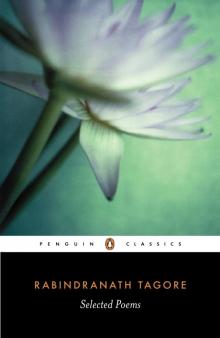 Selected Poems
Selected Poems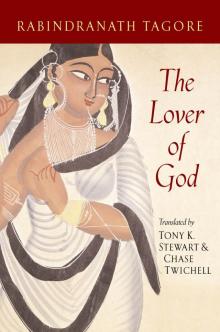 The Lover of God
The Lover of God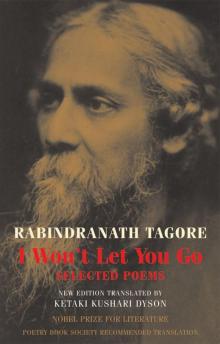 I Won't Let You Go: Selected Poems
I Won't Let You Go: Selected Poems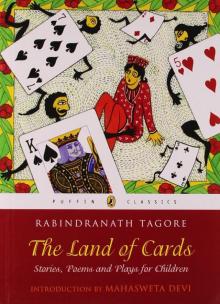 The Land of Cards: Stories, Poems, and Plays for Children
The Land of Cards: Stories, Poems, and Plays for Children The Tagore Omnibus, Volume One
The Tagore Omnibus, Volume One The Boat-wreck
The Boat-wreck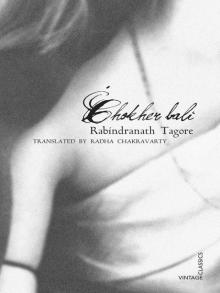 Chokher Bali
Chokher Bali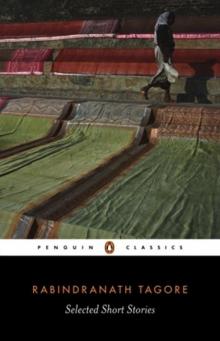 Selected Short Stories
Selected Short Stories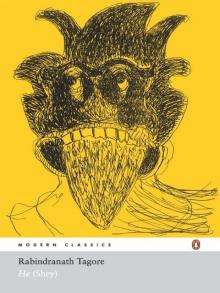 He (Shey)
He (Shey)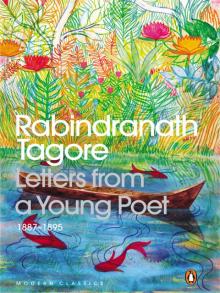 Letters From a Young Poet 1887 1895
Letters From a Young Poet 1887 1895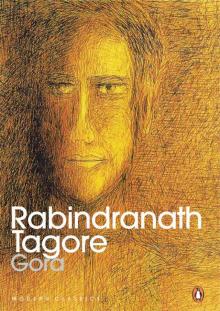 Gora
Gora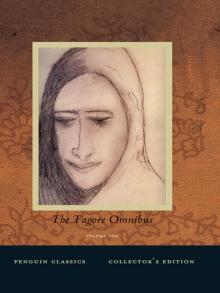 Tagore Omnibus, Volume 1
Tagore Omnibus, Volume 1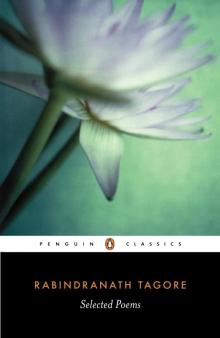 Selected Poems (Tagore, Rabindranath)
Selected Poems (Tagore, Rabindranath)